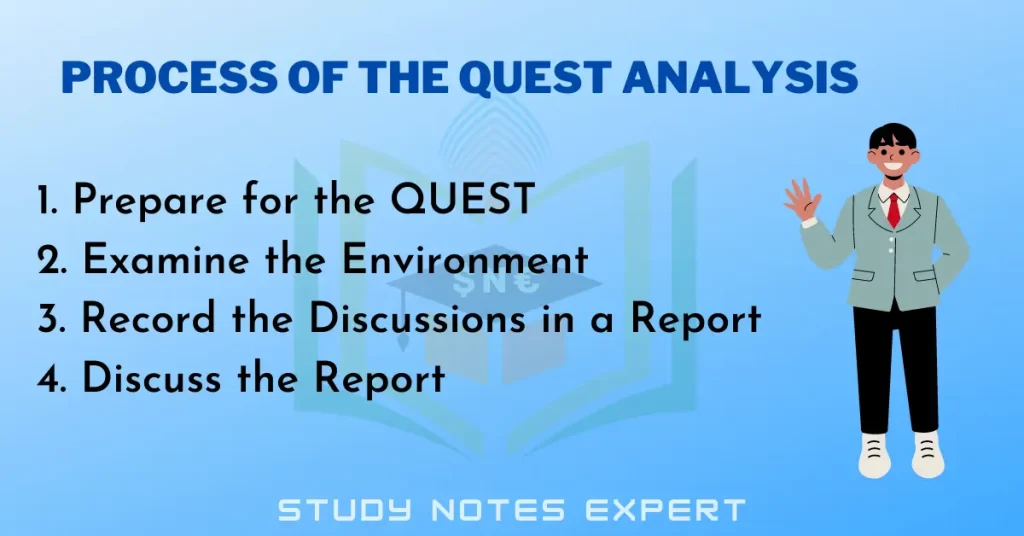The QUEST Analysis, or “Quick environmental scanning Technique,” describes a procedure that allows for the estimation of diverse environmental variables and evaluates their impact on an organization. It attempts to analyze the forces of nature by analyzing the impact of developments and patterns that are occurring in the market. In the following section, you will know the process of quest analysis. Some of the assumptions that create in analyzing the environmental situation using this method include the following:
- These executives are aware of the changing environmental forces.
- These opinions about the environment generally reflect the perception of the environment shared by the business.
Therefore, executives could say that knowledge about the forces of nature is only helpful if there is a way to understand and analyze the effects. If there is no specific approach, the entire plans and expectations for the future are likely in vain, as members can’t share them with executives. The QUEST analysis helps executives to analyze and understand the various perceptions, interpretations, and blunders in the situation.
This method assists the executive in voicing their views and identifying the areas where their ideas diverge from one another. Different perspectives will lead to more effective decision-making to achieve organizational goals. Organizations can make collective decisions instead of individual and independent ones.
Definition of QUEST Analysis
In the words of Nanus, “QUEST is a future research procedure that helps us to allow the planners and executives of an organization to exchange opinions. It works around trends and developments in the coming external environment that are significant for the company’s strategies and policies. This process is a systematic, extensive, and cost-effective method to understand the top issues and to direct the management’s attention. Also, the process identifies the areas where more in-depth analysis and planning will be helpful”.
Various tools are available to conduct QUEST, including stakeholder analysis, questionnaires, the Delphi technique, Structural analysis, etc.
Step by Step Process of the QUEST Analysis

1. Prepare for the QUEST
The first step in the QUEST analysis is to do preliminary preparations. These initial tasks are:
- Definition of environmental concerns.
- Choose the participants for a study (around 12 to 15).
- Provide complete details regarding the recent trends in the environment of the company.
- Choose the place to conduct the research.
2. Examine the Environment
After the preparatory work is completed, the setting where the organization’s operations are conducted is evaluated. The first step is identifying the company’s vision, mission, and goals. Strategic leaders must take a lot of time to analyze their surroundings. For this, you have to study the nature and importance of business environment.
3. Record the Discussions in a Report
The results are compiled in a short report when the business environment is examined. The information is in two sections. The first section outlines the organisation’s strategy, and the second section focuses on the possibilities for the future presented to the organisation.
4. Discuss the Report
The strategic leaders must discuss the report during a meeting and then analyze the various options available to the company. You can evaluate the multiple options as per the organization’s future direction. Here you need to bear in mind the strengths and resources of the organization. It does not provide a strategy to be developed but rather highlights the problems and issues to be considered when forming the strategy. It is the last step of the QUEST Analysis.
Conclusion
Ultimately, the QUEST analysis is a structured process that helps agencies evaluate their strategic environment and make knowledgeable decisions. By following the evaluation steps, corporations can take advantage of precious insights into their present-day situation, pick out opportunities and threats, and increase techniques to reap their objectives. The QUEST evaluation presents a systematic method for corporations to navigate their strategic landscape successfully and pressure success in a competitive enterprise environment.

